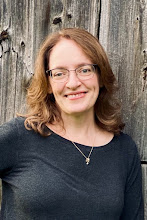I'm so grateful children's nonfiction is getting more support. Just last week NCTE published their Position Statement on the Role of Nonfiction Literature (K-12). This is so, so important. Why? Because kids love nonfiction.
Research shows 42% of elementary students prefer expository nonfiction (the basic facts) over narrative fiction and nonfiction (the story). If we fail to give young readers what they want to read, we fail to help the child become a lifelong reader.
 |
| From "Hungry for Nonfiction" by Nicola Davies. http://celebratescience.blogspot.com/2023/01/hungry-for-nonfiction-by-nicola-davies.html |
This happens so often. Adults who provide access to books often don't value nonfiction the same way they value fiction for children. For example, summer reading lists typically only have a few nonfiction title options (certainly not 50%...or even 25%...based on the ones my children have brought home and the ones I've seen in libraries and online). Teachers, librarians, and parents rarely read nonfiction aloud. Bookstores often have a very small section devoted to children's nonfiction. Fiction authors are more often chosen as guest speakers for author visits. Libraries often tuck nonfiction in back corners. Though the New York Times separates adult books between fiction and nonfiction, fiction and nonfiction children's books on their bestseller list are clumped together though divided by picture book, middle grade, young adult, and series. (There's a petition you might be interested in signing regarding this.)
This quote from author Nicola Davies is from a recent article titled "Hungry for Nonfiction."
There is a great deal of talk about giving children access to a diversity of texts that reflect their lives and experiences. But there is less talk about access to texts that reflect and explain the diversity of the world and what it contains.
So what can we do?
Despite the fact that many adults are not giving children what they love and need, we can each make a difference even if we aren't a teacher or librarian.
In addition to providing quality nonfiction to young people in your life, consider sharing these articles with educators, librarians, and parents.
Children's Nonfiction Has an Image Problem at Publisher's Weekly
Hey Grownups! Kids Really Do Like Nonfiction at Publisher's Weekly
If an educator such as a librarian or classroom teacher needs more support, I highly recommend they visit Melissa Stewart's website and blog which are full of resources. (I hope they would also find resources here at my site, but Melissa provides much more.) In addition, check out author's websites. Many include educator guides (linked to mine) for their books. Though intended for classroom use, these can often be adapted for use at home by parents and caregivers.
I also heartily recommend the book 5 Kinds of Nonfiction (available at a discount and with free shipping from Stenhouse, the publisher) written by Melissa Stewart and Marlene Correia and Nonfiction Writers Dig Deep edited by Melissa Stewart.
My next blog post will share some examples of my books being loved by children because the adults in their lives first shared them. Spread the word, #kidslovenonfiction.
Edited: The blog post is now available! Share Nonfiction With Kids.

















Amen to all you've said, Annette! I read Melissa's blog and have seen the NCTE Position Statement on the Role of Nonfiction Literature (K-12). I know the kids in my art classroom love your books, as do I!
ReplyDelete